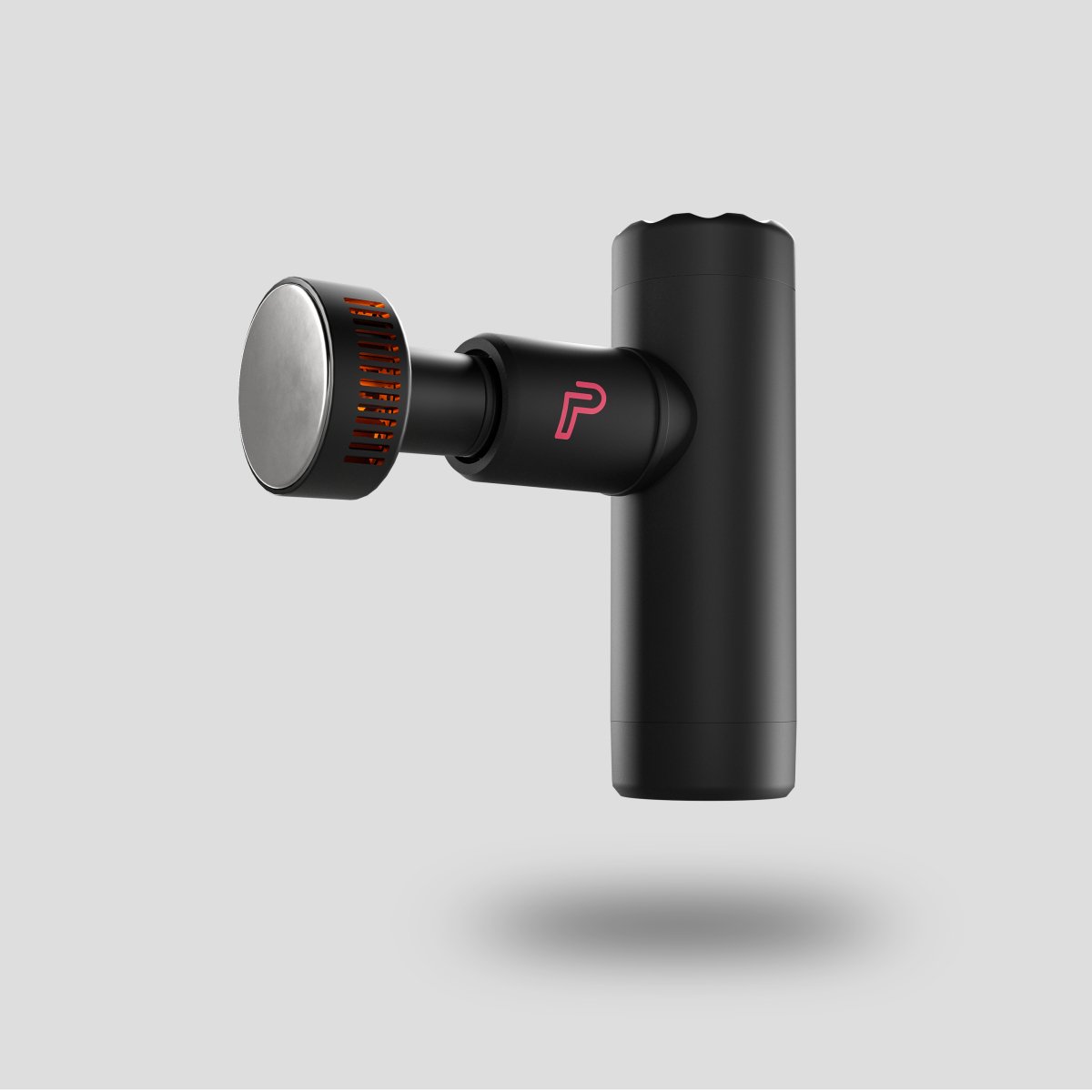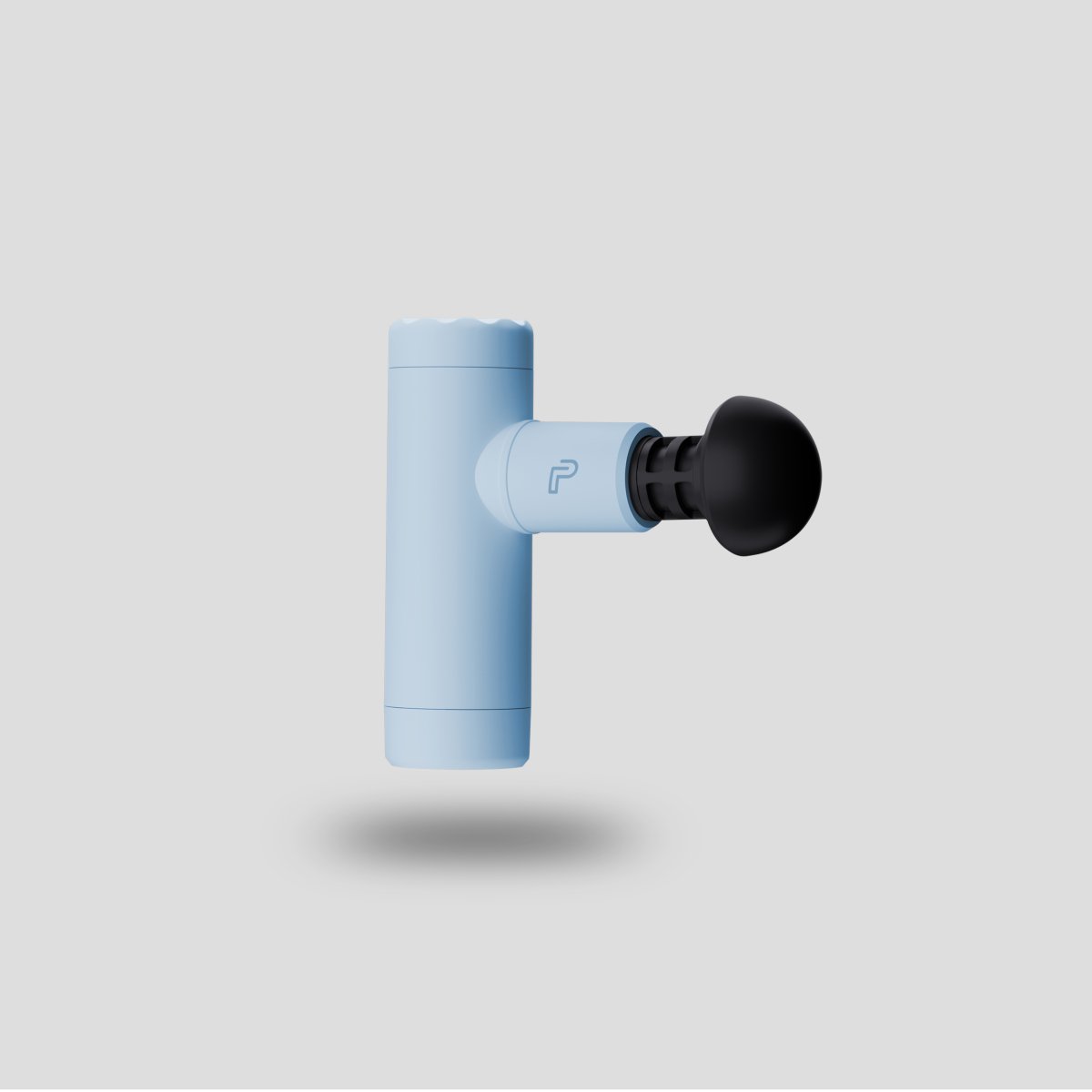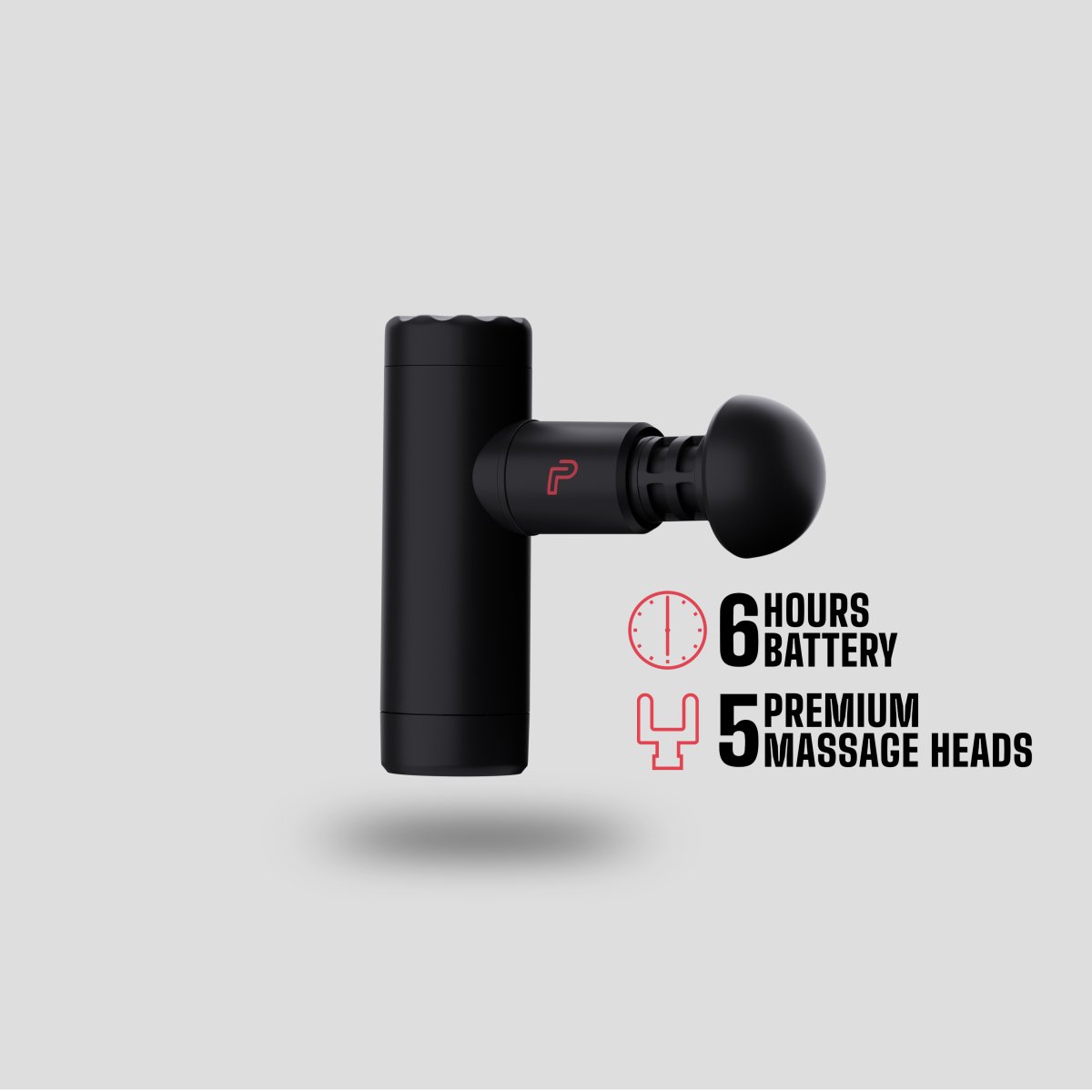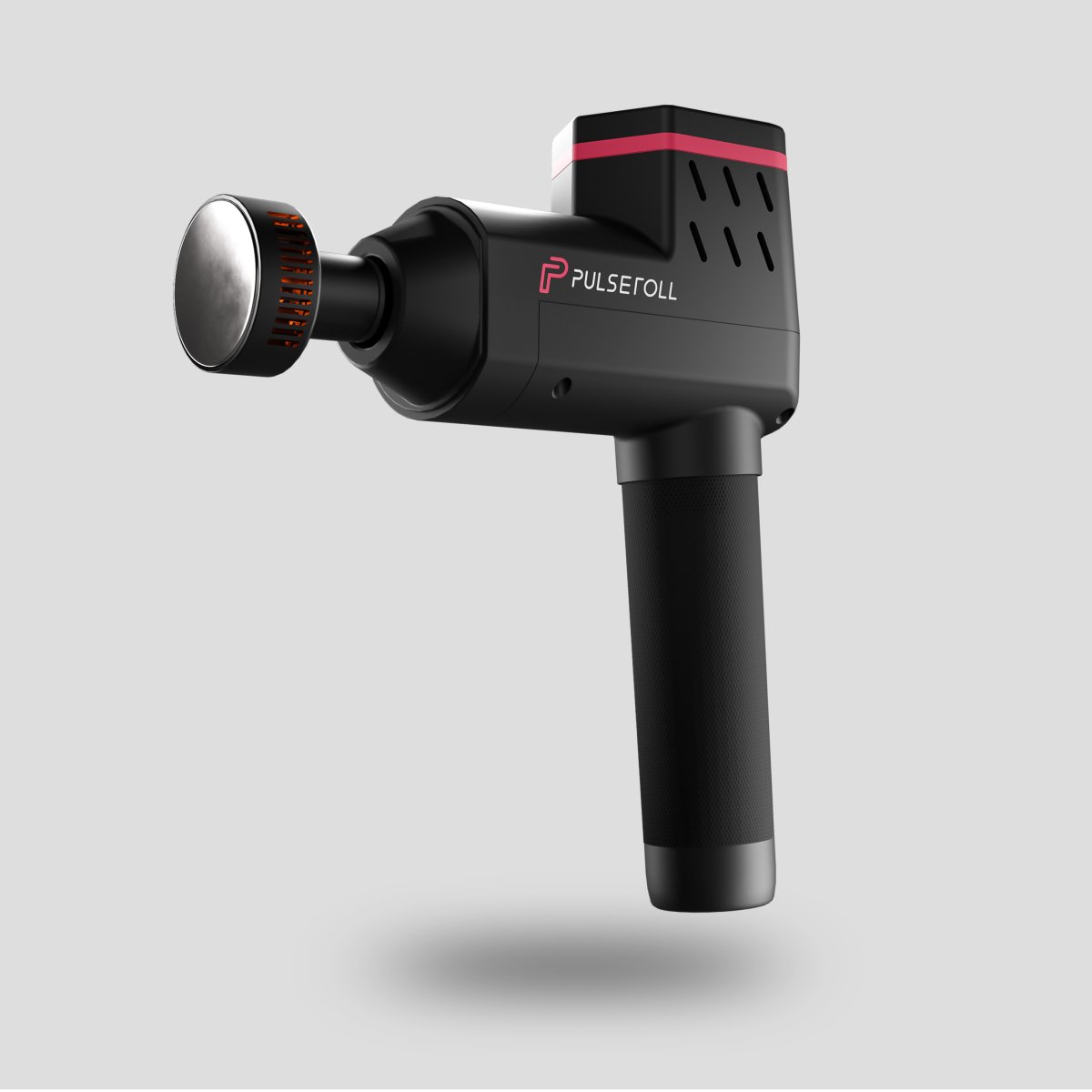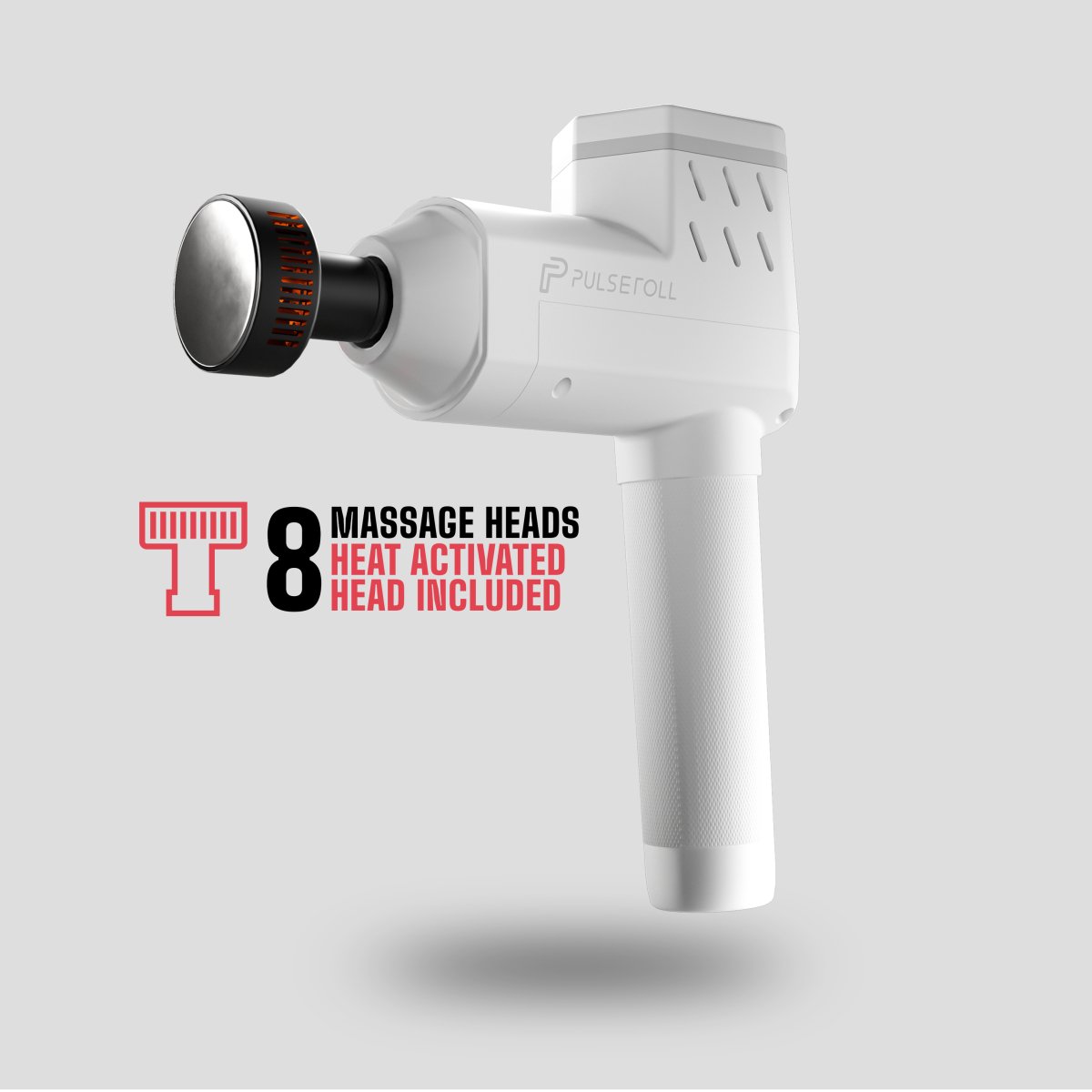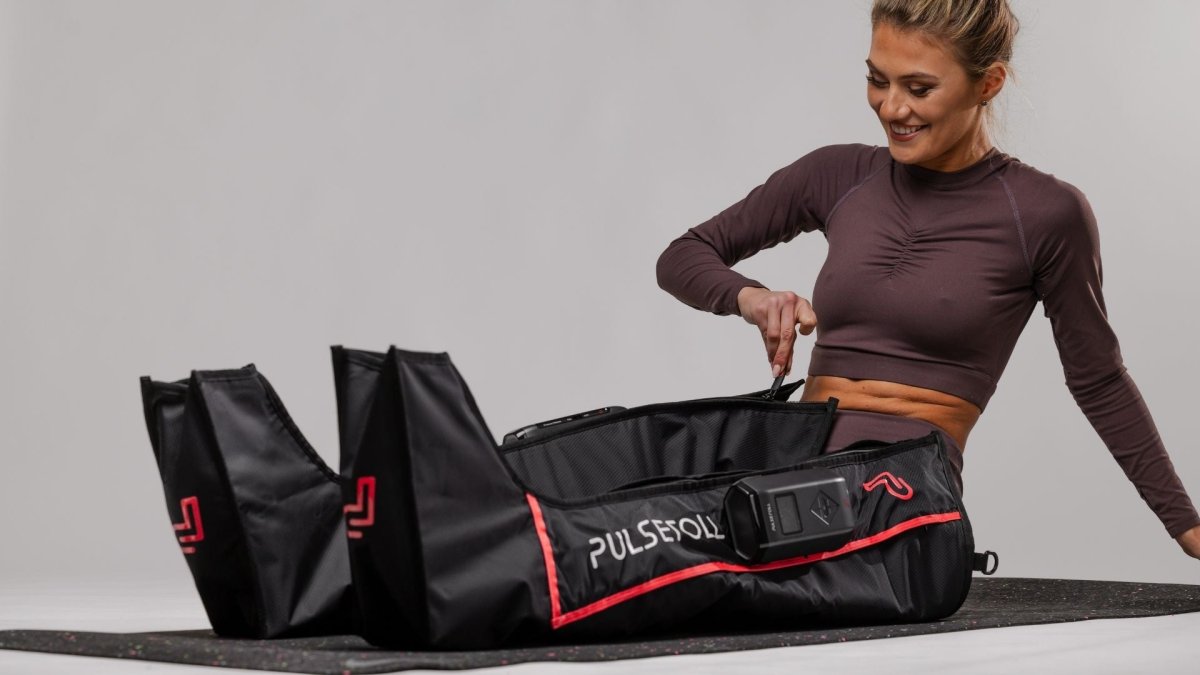Foam rolling is a recovery technique that can help to alleviate muscle aches, aid rehabilitation, and increase range of movement (ROM). As they can improve blood flow and muscle oxygen levels, foam rollers are an ideal tool, which can be used during warm-ups or cool-downs for faster recovery.
A 2021 study by Percival et al1 (research conducted by SunSport) demonstrated that the use of a vibrating foam roller improved recovery time, reduced loss of strength, and increased muscle oxygen levels by 47% using a Pulseroll compared to the control group.
We will be taking a closer look at the study and the role of vibration therapy where exercise-induced muscle damage (EIMD) is concerned.

What is Foam Rolling?
Foam rolling is a self-myofascial release technique (SMR), meaning self-massage technique, and is usually used by those wishing to either prevent or remedy muscle pain or –tightness as a result of exercise. As foam rolling improves circulation, this recovery technique is effective for improved flexibility and reducing DOMS (Delayed Onset Muscle Soreness).
Vibrating Foam Rollers – What are the Benefits?
SunSport Coaching’s study considered whether local vibration therapy (VT) would alleviate the impairments and circulatory changes associated with EIMD.
Participants were randomly split into two groups. To induce muscle damage, both groups performed 10 sets of 10 eccentric wrist flexions at 70% of their 1-repetition maximum. Their grip strength and muscle oxygen levels (SmO 2), were measured before exercise, and then 1 hour, 24 hours, and 48 hours after exercising.
One group used Pulseroll’s vibrating foam roller directly on their arm after the workout, a second ‘control’ group was not given local vibration therapy as part of their recovery.
1. Vibration Therapy can Speed Up Recovery
The study confirmed that recovery was faster for participants using Pulseroll’s vibrating foam roller than it was for those in the control group.

In this study, the VT group saw an increase in SmO2 (muscle oxygen levels) of 78% from baseline to 48 hours post-EIMD. This is a significant improvement compared to the 31% increase in the control group.
It could therefore be the case that the VT group experienced increased blood flow, which can be considered a factor in muscle maintenance following exercise-induced muscle damage.
2. Vibration Therapy can Prevent Loss of Muscle Strength
SunSport’s study demonstrated that a loss of strength was observed only for the control group, where participants did not partake in any vibration therapy with Pulseroll’s vibrating foam roller. Muscle strength was maintained in the VT group, perhaps due to their improved Sm02 re-saturation rate.

A previous study by Moraleda et al 2, which measured the positive effects of vibration therapy on EIMD (exercise-induced muscle damage), concluded that a possible cause of maintained muscle strength could indeed be Sm02.
3. Foam Rolling can Alleviate Muscle Pain
According to a 2015 study by Pearcey GEP et al 3, physically active male participants experienced a reduction in DOMS (delayed onset muscle soreness) when foam rolling for 20 minutes 2-, 24- and 48-hours after exercise. This was compared to exercising without foam rolling.
4. It may Improve Range of Motion (ROM)
Whilst further investigation is needed into this area, it is considered that foam rolling can improve your flexibility.
In a 2013 study by MacDonald et al 4, improvements in ROM of 7-10 degrees were observed in those using foam rolling for their knee joint, compared to those who did not use a foam roller. Similarly, in a 2018 study by Madoni et al 5, foam rolling was shown to improve range of motion, whereas participants who did not foam roll saw a decrease in ROM.

Conclusion
This scientific study is amongst the first to combine the latest wearable technology to measure the effectiveness of commercially available vibrating roller technology. The research-validated the use of Pulseroll’s vibrating foam roller as a method of enhanced recovery after exercise and was published in the Journal of Athletic Training. See more of our own research studies here.
The application of local vibration therapy appeared to contribute to positive effects on exercise-induced muscle damage via improved blood oxygenation and retained muscle strength. Muscle oxygen levels after exercise increased 47% more with local vibration using Pulseroll than versus the control group. This increased oxygen available within the muscle is one potential mechanism helping to reduce loss of muscle strength, to ease muscle soreness, and t speed up recovery.
Pulseroll Vibrating Foam Roller is available for UK next-day delivery and comes with a 90-day guarantee.
Buy Now
References:
1 S. Percival, D. T. Sims, G. K. Stebbings; Local vibration therapy increases oxygen re-saturation rate and maintains muscle strength following exercise-induced muscle damage. J Athl Train 2021; doi: https://doi.org/10.4085/1062-6050-0064.21
2 Moraleda BR, García GJ, Rayo CA, Fernández BC, García MN, Morencos E. Effects of Vibration and Non-Vibration Foam Rolling on Recovery after Exercise with Induced Muscle Damage. J Sports Sci Med. 2019;18(1):172–180
3 Pearcey GEP, et al. (2015). Foam rolling for delayed-onset muscle soreness and recovery of dynamic performance measures. DOI: 10.4085/1062-6050-50.1.01
4 MacDonald et al. 2013. An Acute Bout of Self Myofascial Release Increases Range of Motion Without a Subsequent Decrease in Muscle Activation or Force. J Strength Condition Res 27(3):812-821
5 Madoni, Samantha N.; Costa, Pablo B.; Coburn, Jared W.; Galpin, Andrew J. Effects of Foam Rolling on Range of Motion, Peak Torque, Muscle Activation, and the Hamstrings-to-Quadriceps Strength Ratios, Journal of Strength and Conditioning Research: July 2018 - Volume 32 - Issue 7 - p 1821-1830 doi: 10.1519/JSC.0000000000002468
6 Madoni, Samantha N.; Costa, Pablo B.; Coburn, Jared W.; Galpin, Andrew J. Effects of Foam Rolling on Range of Motion, Peak Torque, Muscle Activation, and the Hamstrings-to-Quadriceps Strength Ratios, Journal of Strength and Conditioning Research: July 2018 - Volume 32 - Issue 7 - p 1821-1830 doi: 10.1519/JSC.0000000000002468
By Stuart Percival
Head sports physiologist Sunsport Coaching
British Cycling Level 2 certified coach
Training Peaks level 2 certified coach
Level 2 gym instructor (REPS)
Level 3 personal trainer (REPS)
B.sc Sports and exercise science







